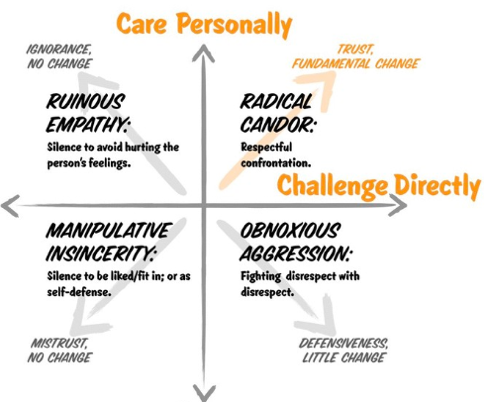
Under Pressure: Why leaders need to be coaches
Taking a coaching approach (asking questions to facilitate thinking/problem solving of your staff member or coachee) is crucial to building capability, self-responsibility and motivation, to get the most out of them and just as importantly, to reduce their dependence on you.
Most leaders yearn for more time, to devote to strategic thinking/planning (required for long term success). Clawing back time for ‘big picture thinking’ requires your self-discipline but is made a lot easier by reducing dependency on you.
Changing Habit/’Reward’ - chemical sub-routines that get in the way….
But here’s the rub. We spend all our lives, being rewarded for ‘what we know and what we’re good at’. But leaders aren’t rewarded by what they’re personally good at but rather by the outcomes they enable (from their teams, and their organisation). When we know the answer, the reward centre in our brain triggers the production of a shot of serotonin – hence we ‘feel good’ while we create others’ dependence on us. Good for ‘feeling good’ right now, bad for creating high performing, capable, self-responsible employees that think for themselves beyond now.

Serotonin: Feel Good Neurotransmitter
We must re-train the reward centers in our brain to associate ‘telling, giving the answer’ as a negative, and taking a moment to engage the guided questions required to coach performance as a positive. This takes conscious commitment over time, as well as patience and time in the moment.
Gift of Guided Questions
Coaching is simply the art of asking guided questions, it’s that simple. This can happen in a deep/meaningful way or in a 30 second conversation, but in all cases, it takes a high degree of consciousness and purposefulness. Guided questions open up the coachee’s thinking/exploring in the direction you feel they need to go. It can open up new options, help them evaluate options or help them to narrow in on the right decision. The point is that when it’s ‘their decision’, it’s their decision – they are more inclined to own it, drive it, it becomes theirs.
When the Pressure is On
When we are under pressure, we are more likely to ‘react’unconsciously. That means we are likely to engage our ‘telling’ rather than our ‘asking’ (go back to old habits, cue reward). It’s at this crucial time, that we are most at risk of eroding self-responsibility and empowerment om others. Unconsciously we are communicating to our staff that when the going gets tough, don’t take personal risk, don’t work it out for yourself, and defer to your manager/leader. This can grind organisations to a halt, kill innovation, disempower staff and create dysfunction that is hard to overcome – even when the pressure eventually comes off.
No one is saying this is easy. As we engage our ‘asking’, especially at first, it can feel like the coachee is being challenged or even threatened (certainly their thinking is!). For it to be productive, we must engage high care combined with patience (up the ‘care personally’) – otherwise we risk that they will flip into protection mode rather than openly exploring solutions (which requires vulnerability).

Ref: Radical Candor
Caveat: There is a time for engaging our ‘telling’ and going back to our highly directive communication style - when it’s a genuine emergency. No time for questions when the building is burning down, “Evacuate!”. But it’s worth asking yourself (and honestly answering) “is the building really burning down at this very moment?”, “Do I really not wantall the benefits that come with taking a coaching approach?”. Chances are, if we’re honest, the building is not always burning down, we may just feel like it is.
But Wait, There’s More!
The other benefit of taking a coaching style into high pressure environments, is that in maintaining a calm questioning style, we appear unflappable. We appear strong, in control and worthy of following. It gives us extra leadership gravitas – so when we do flip into our ‘telling’ (communicating purpose, vision, strategy, expectations and give feedback etc), it has high impact.
Have to let someone go? Coaching is especially helpful, to help them to leave the organization in a psychologically healthy state (red carpet on the way in, red carpet on the way out). Engaging questions to help them connect with what is important to them, what excites/motivates them, and options for the future that might be a better fit for them, demonstrates that we care about them. When we feel cared for, in the hardest of circumstances, we are far less likely to bad mouth our former employer (which can be so destructive internally and externally).
Crunch Time
It happens in a flash, the choice between ‘tell’ vs. ‘ask’. It’s muscle and automatic reflect/habit that builds over time. In the words of Stephen King “you can, you should, and if you’re brave enough to start, you will.”
[ Return to QLead ]

